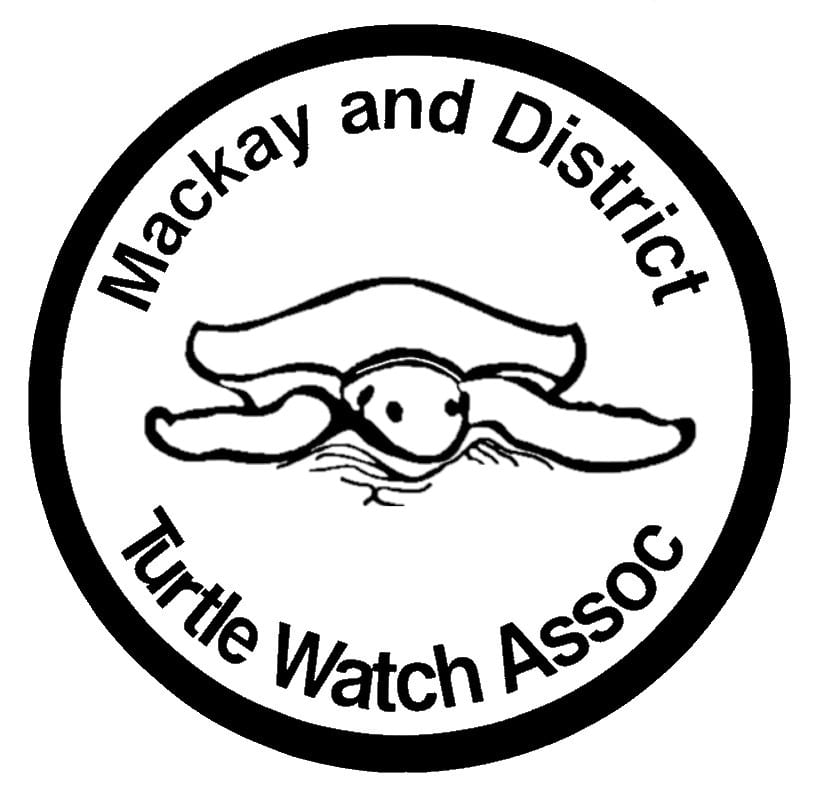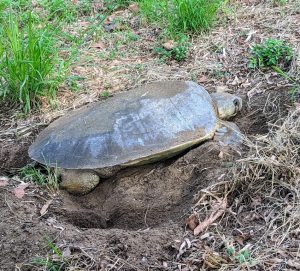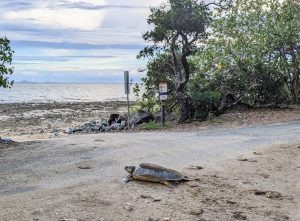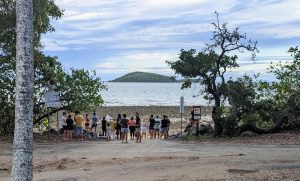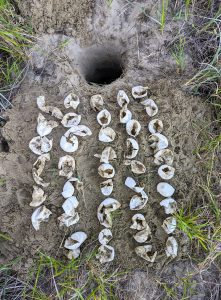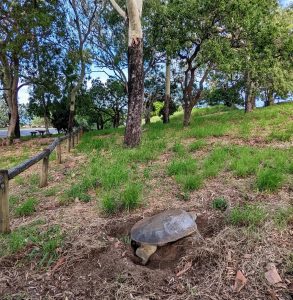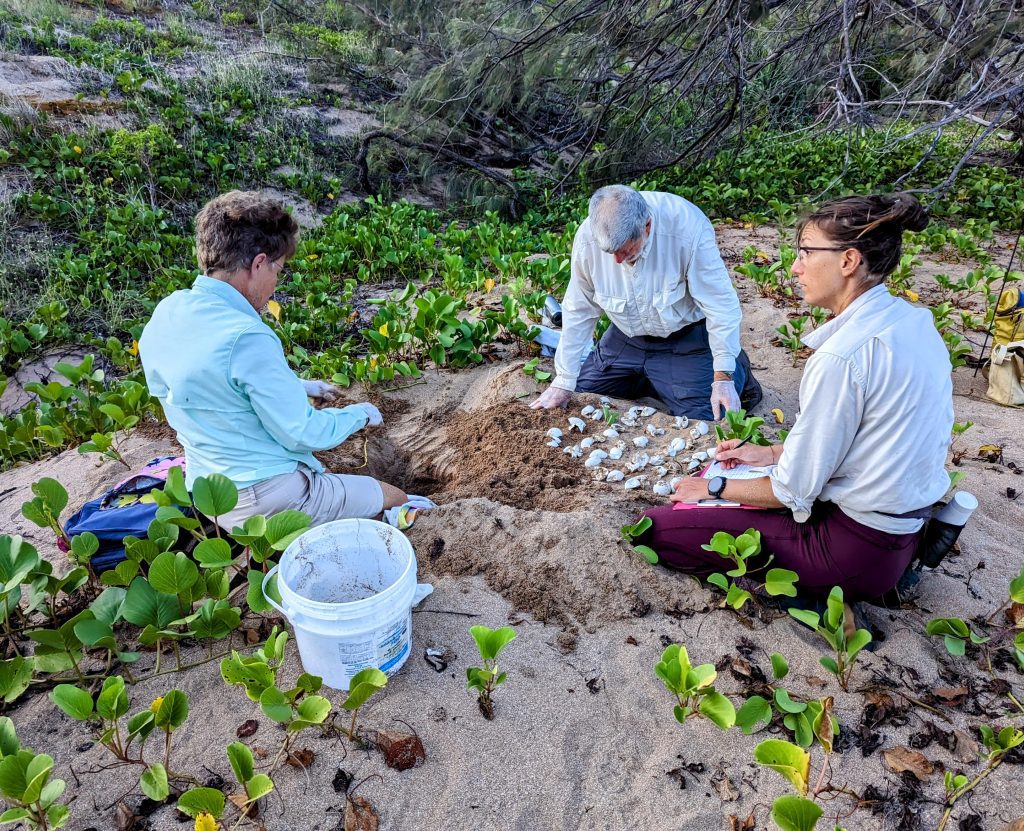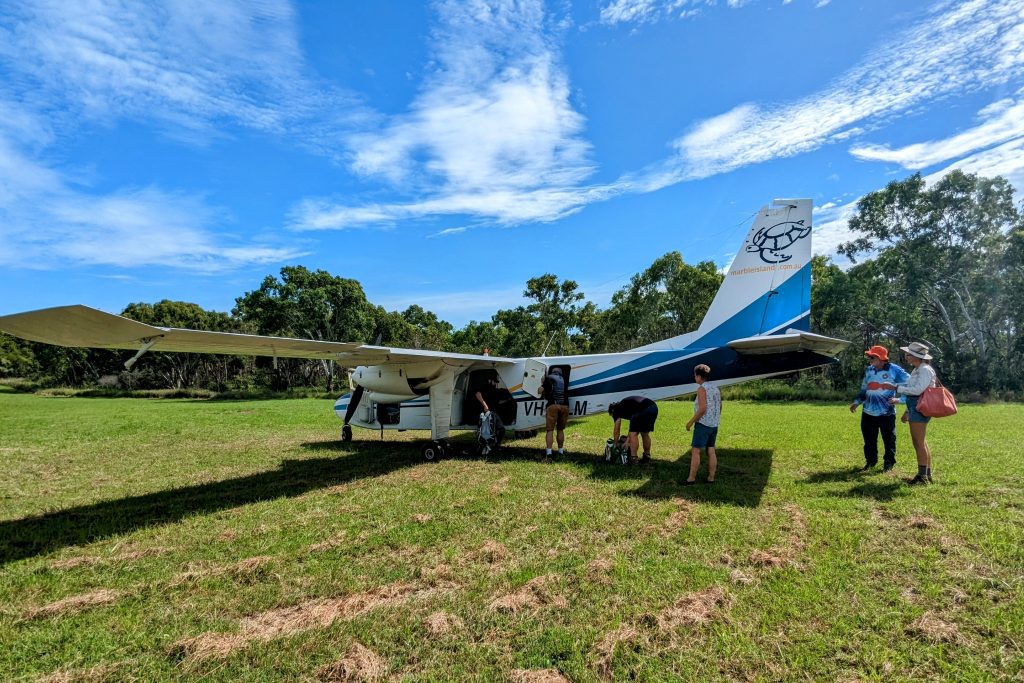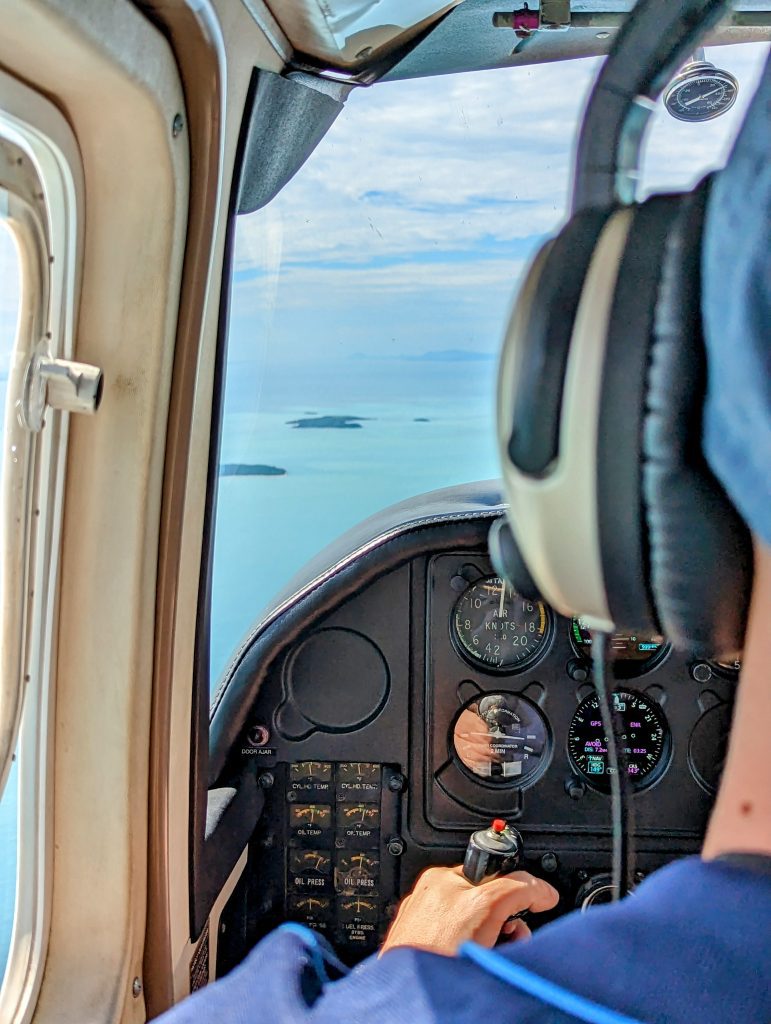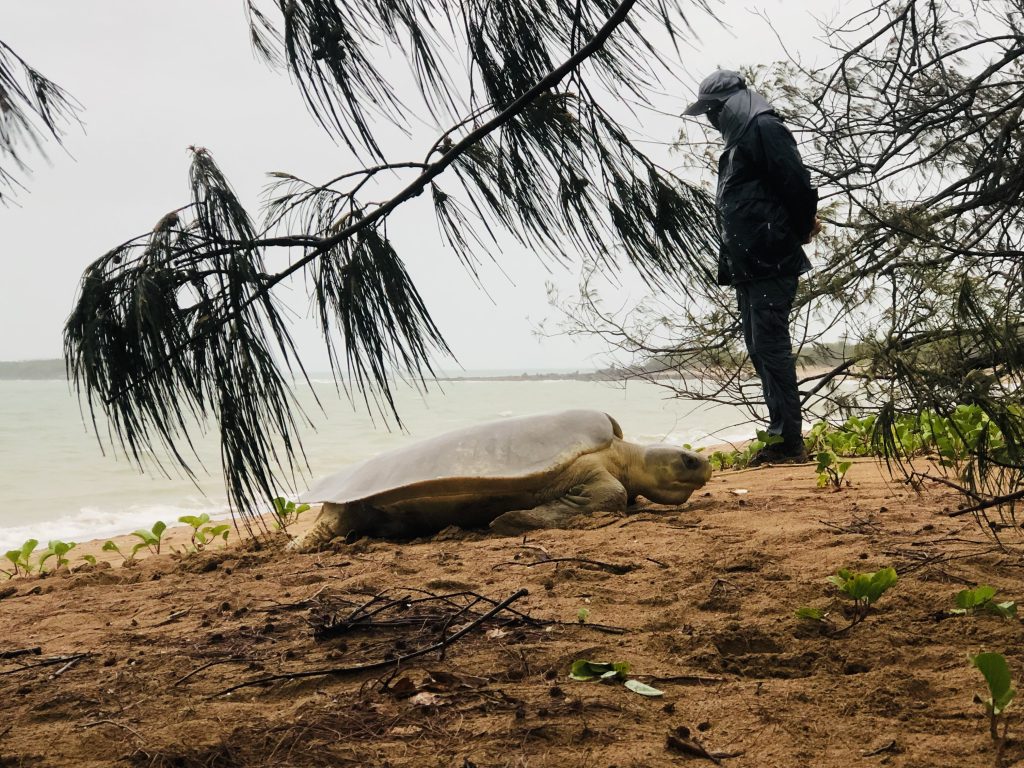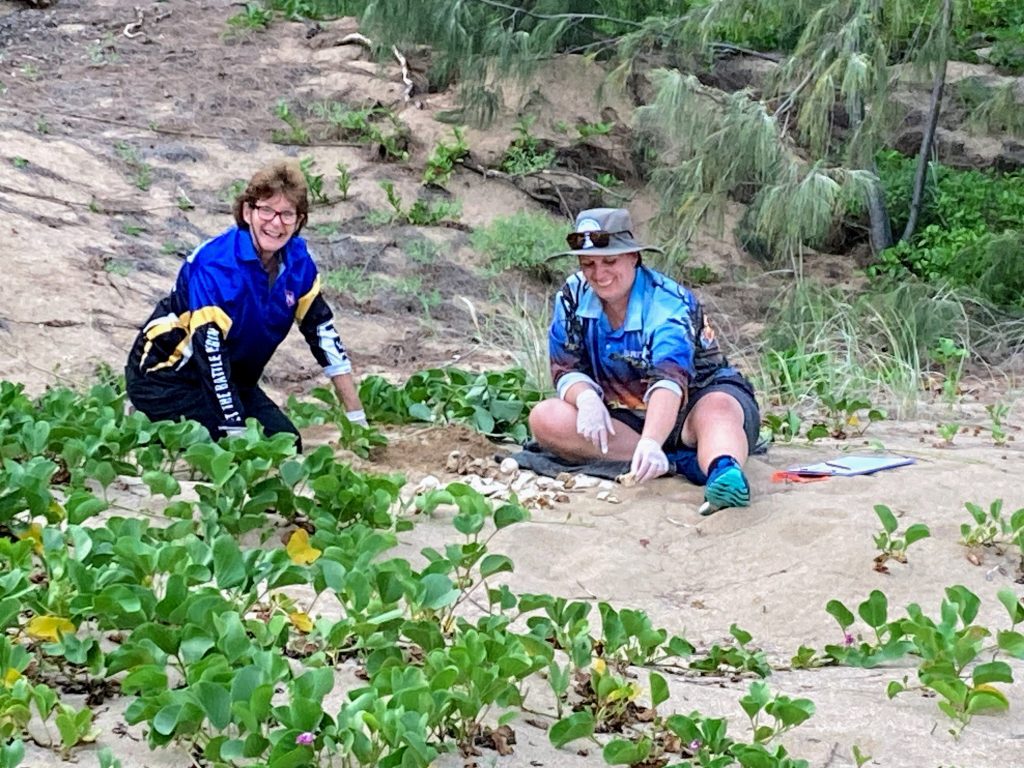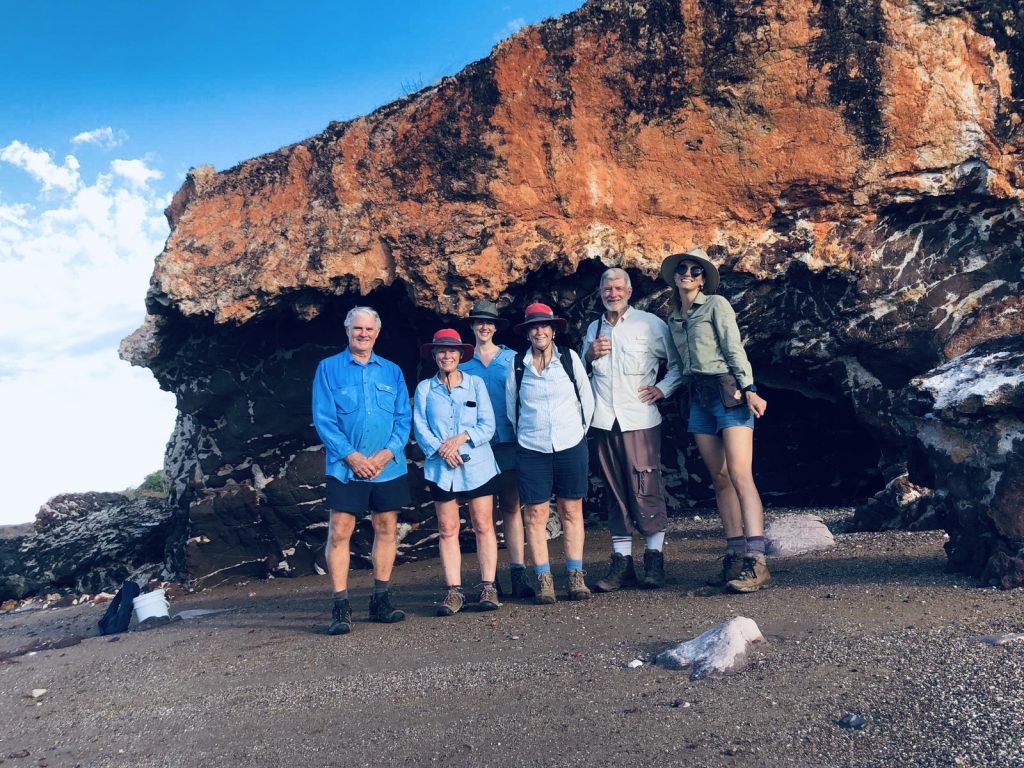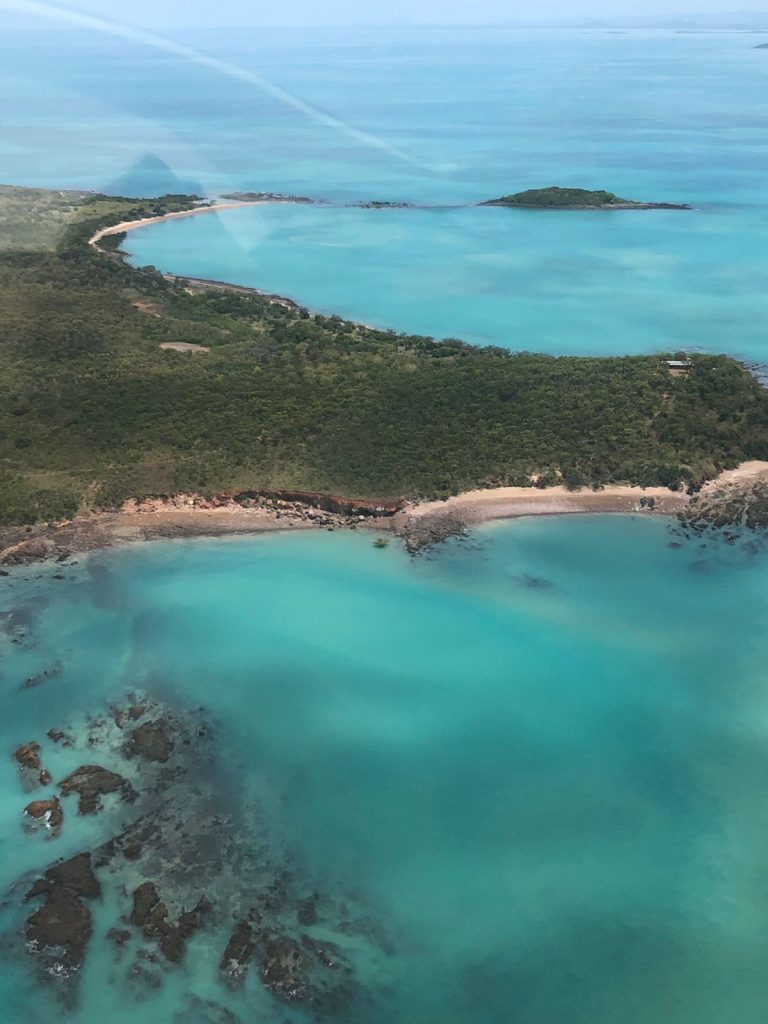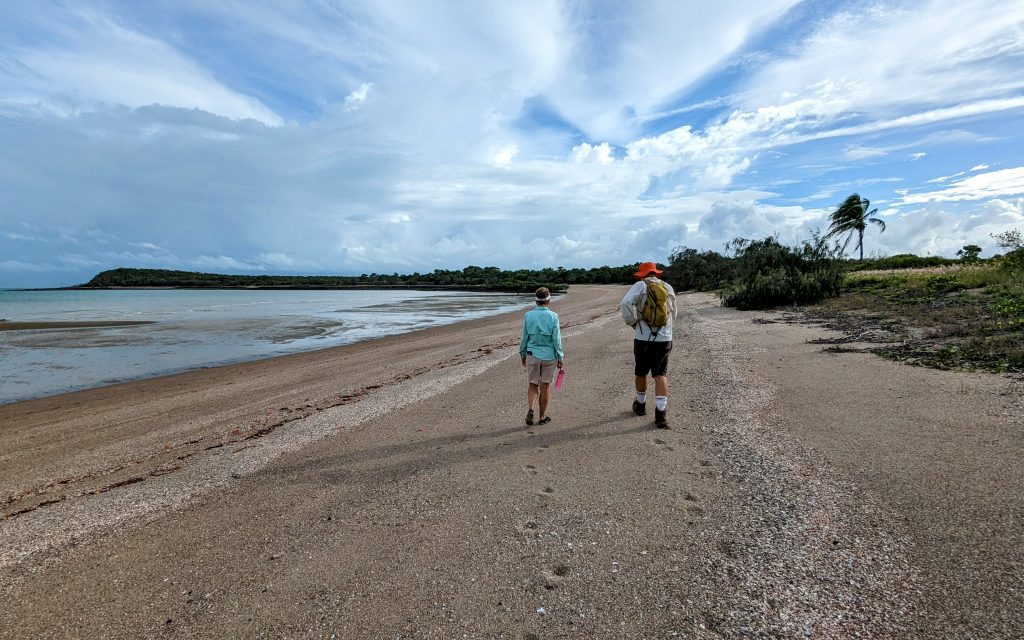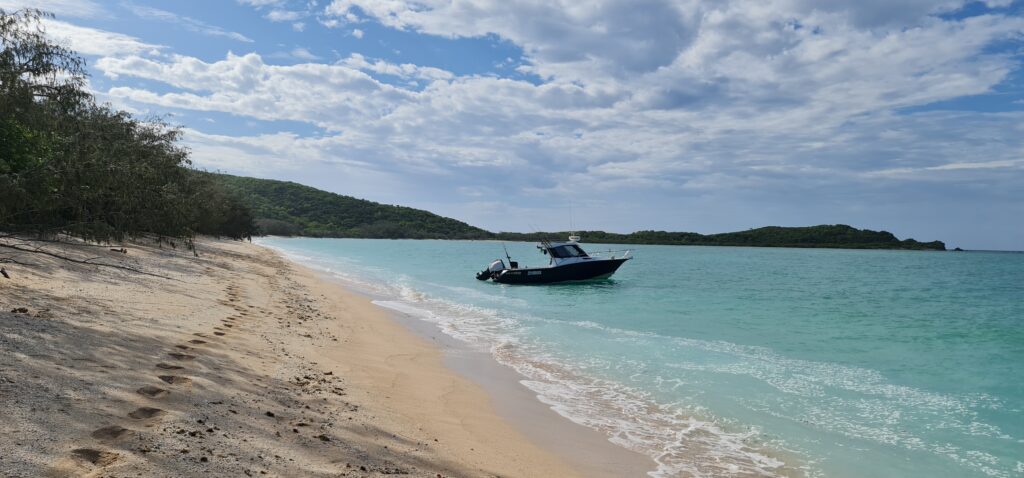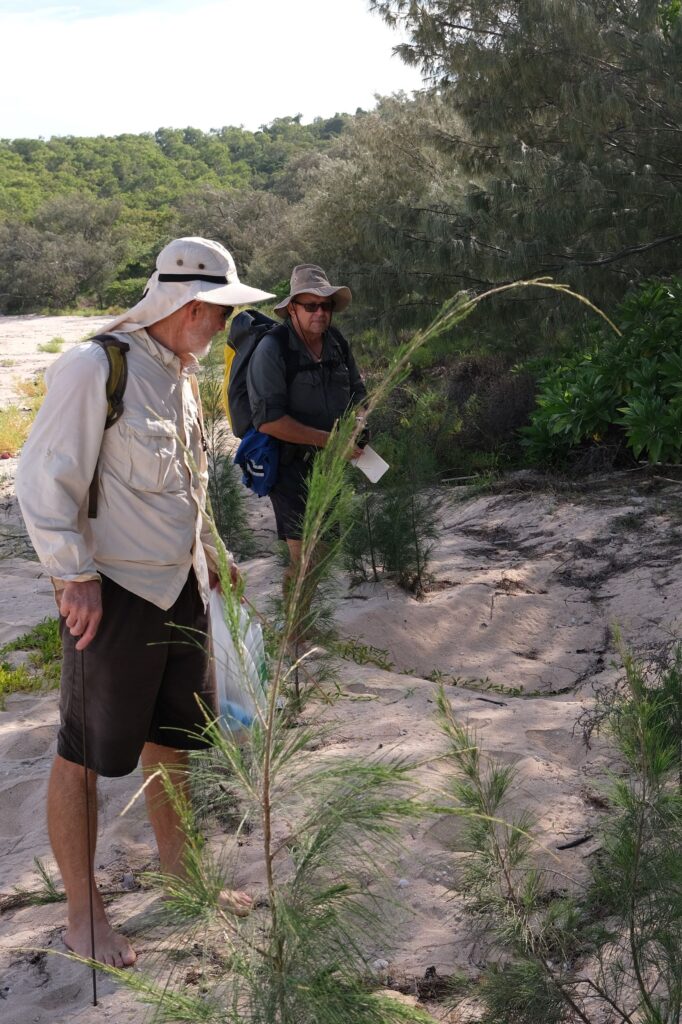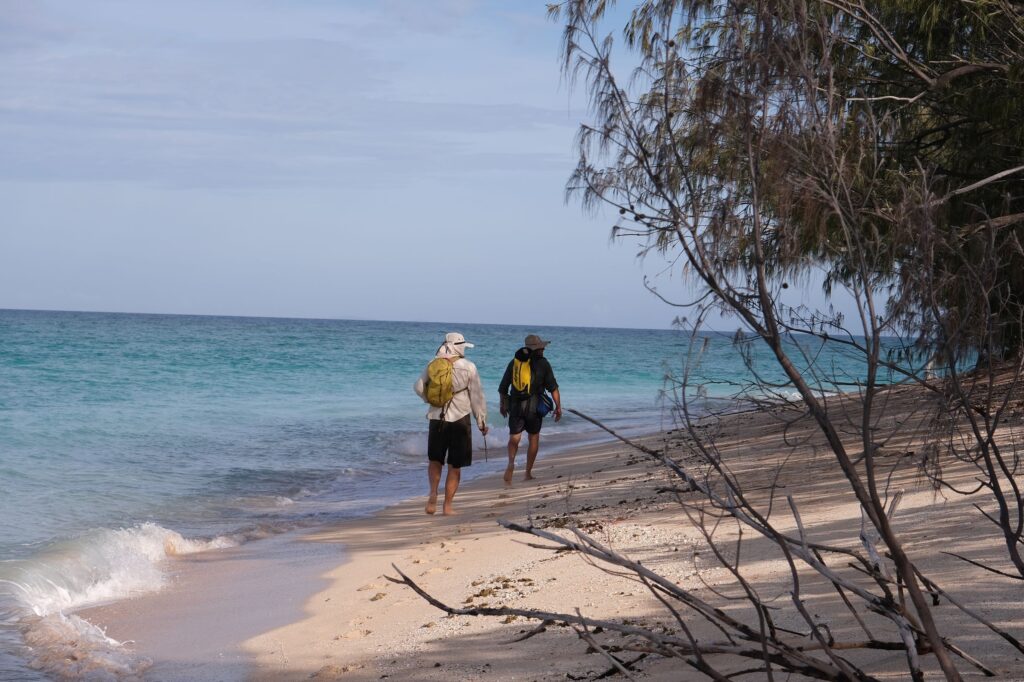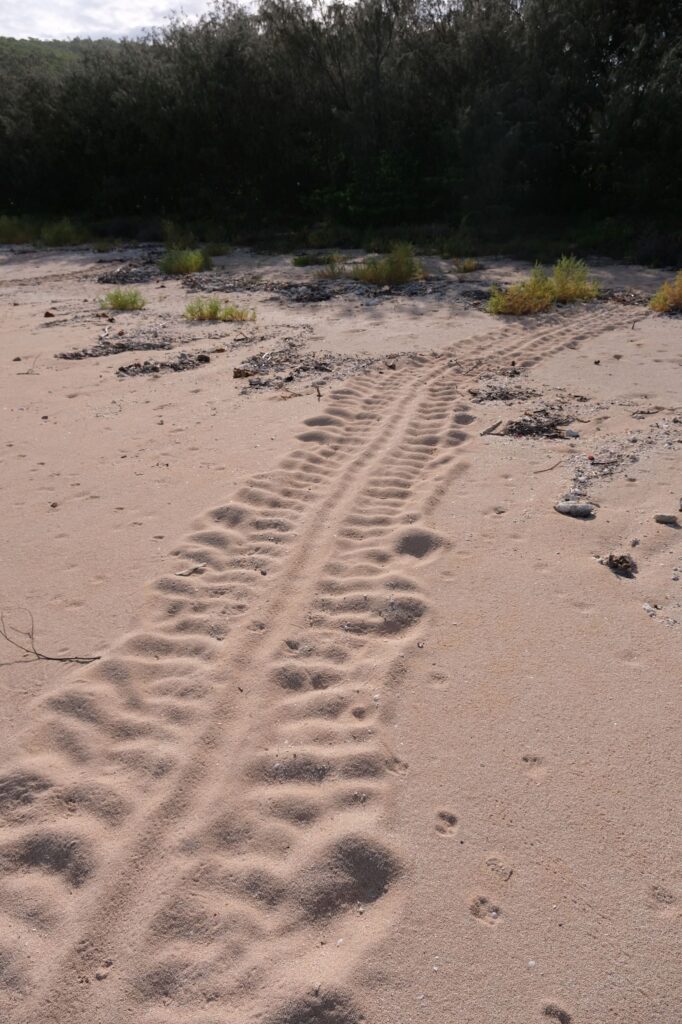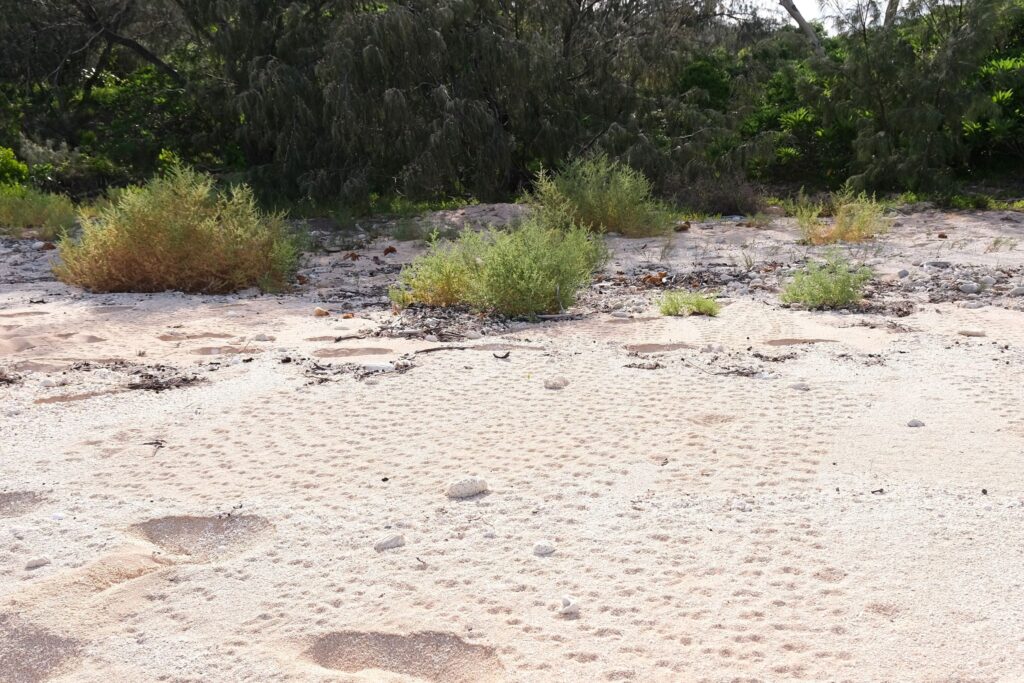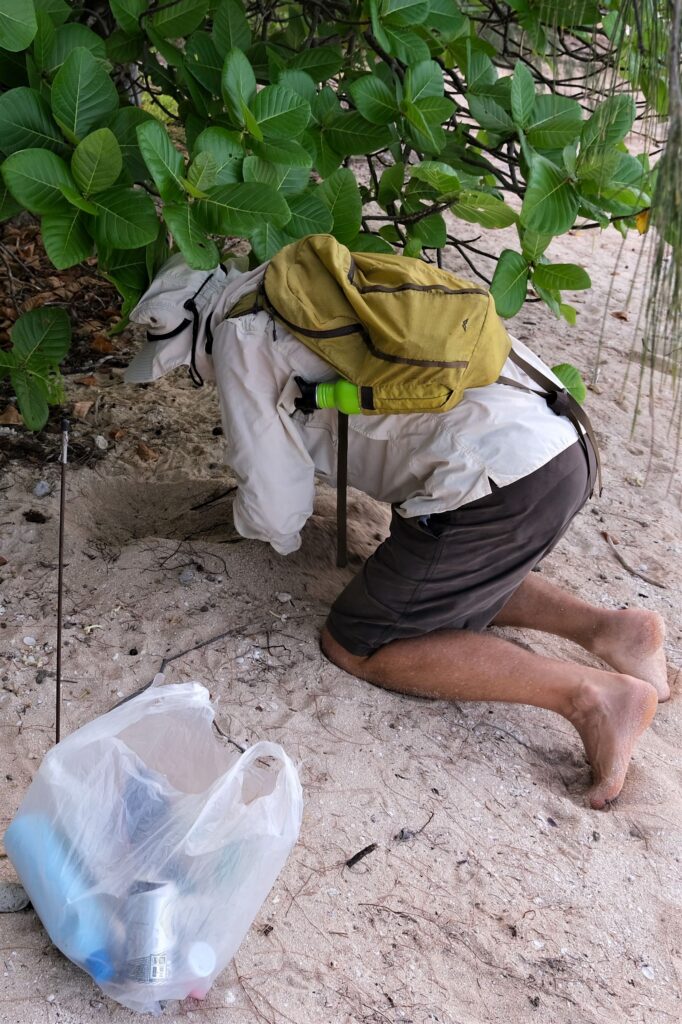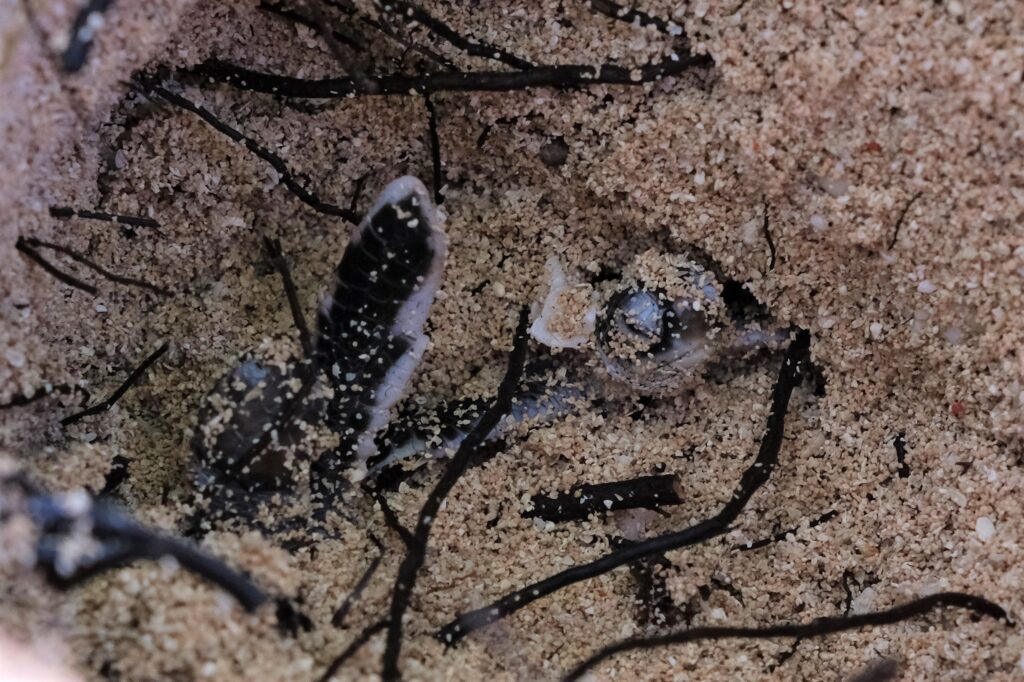Did you know sea turtles don’t just nest in the Mackay region?
They also feed and mate in the waters around Mackay.
While Flatbacks are by far the most common turtles to nest on our beaches, they don’t always feed or mate in the area.
Greens are often spotted basking (resting) or mating close to shore and can sometimes get caught out with the outgoing tides. They are usually busy feeding on the seagrass beds around Mackay and often mate in the waters around here but will then take a bit of a journey to go to their preferred nesting beaches.
So while we get mostly nesting female Flatbacks on the beaches, we only get the occasional nesting Green turtle.
Different turtles can use the same area for different purposes so it’s always interesting to see what shenanigans they get up to!

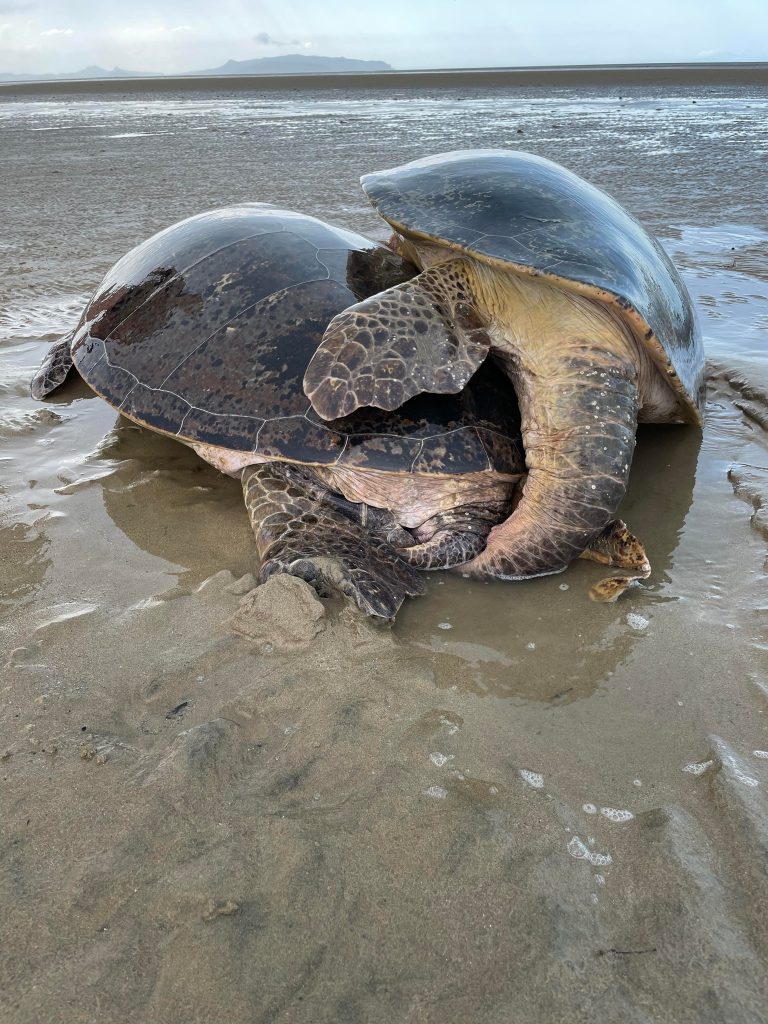
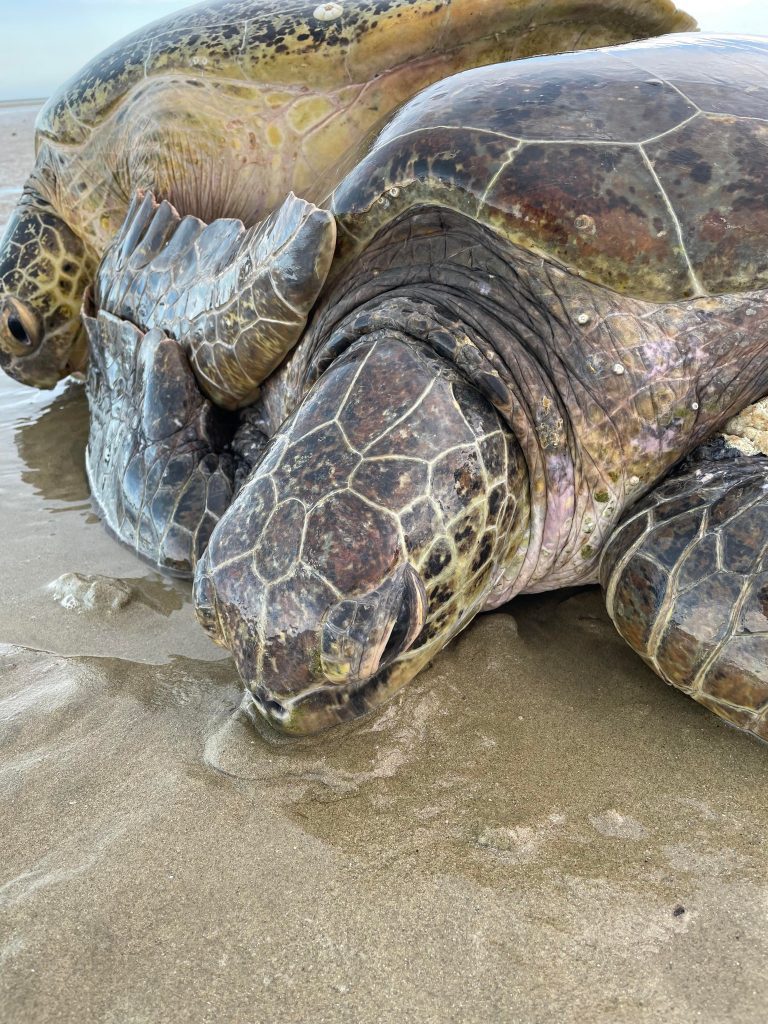
These two Green turtles were spotted off Shoal Point by a concerned local who was relieved to learn they were perfectly ok but maybe just needed to work on their timing. They got a bit carried away and missed the tide going out so they had a little rest on the sand until the tide came in again.
Turtle Watch was alerted and the turtles were tagged and measured for our records, the female had an impressive 106.7cm carapace!
If you’re concerned about a turtle on the beach, please call the stranding hotline (1300 130 372) and they will determine if intervention is needed or if it’s just a turtle in need of a nap.
